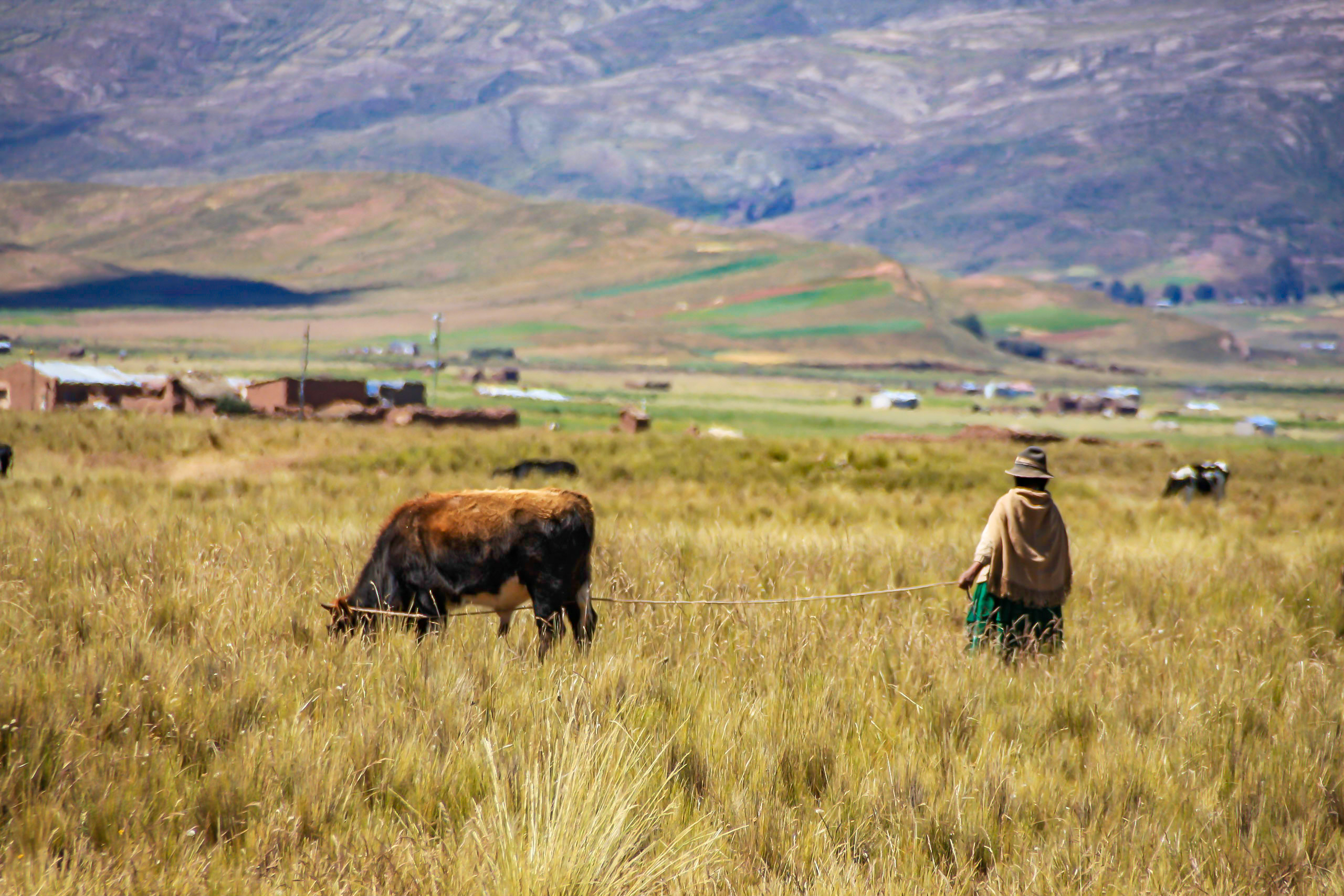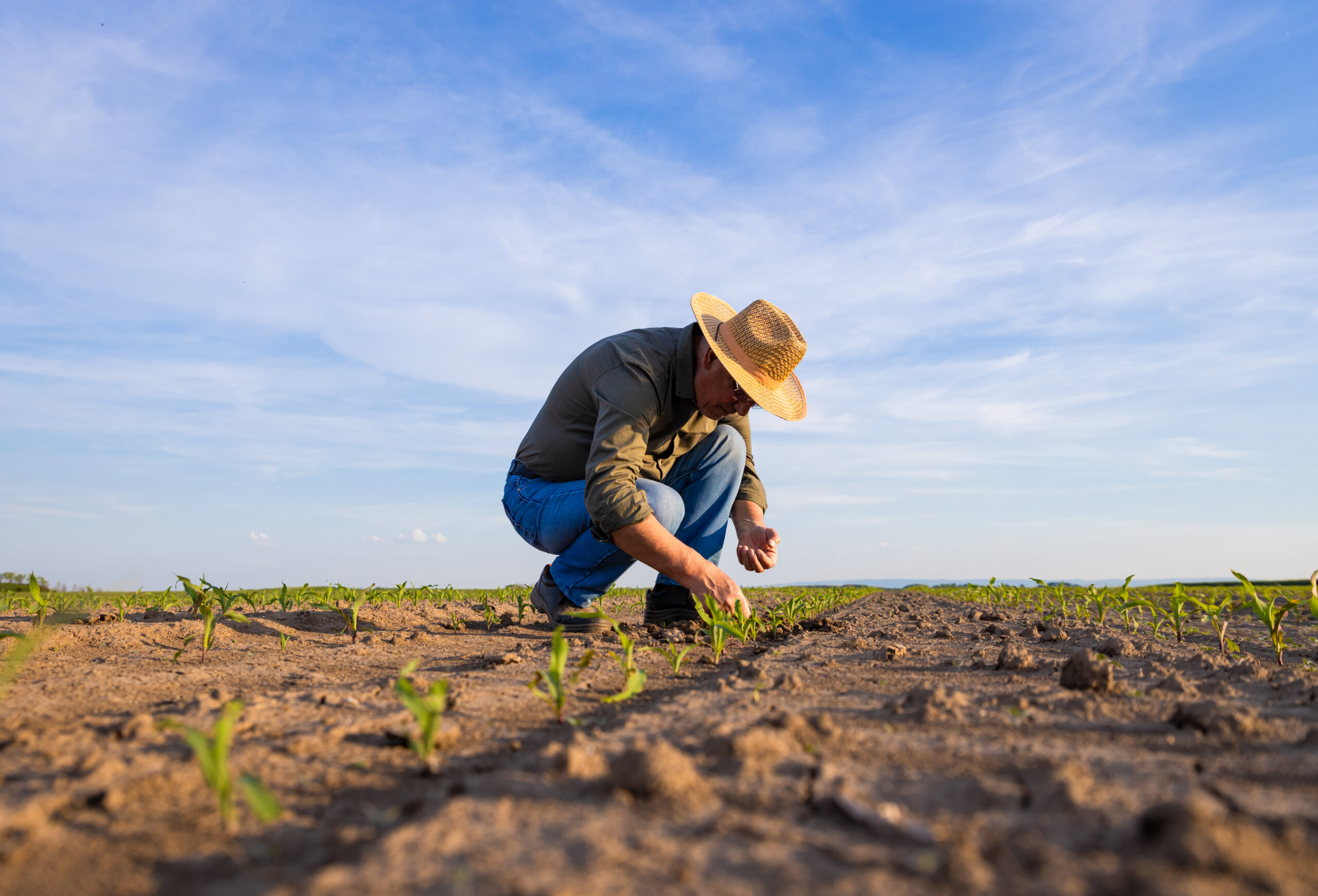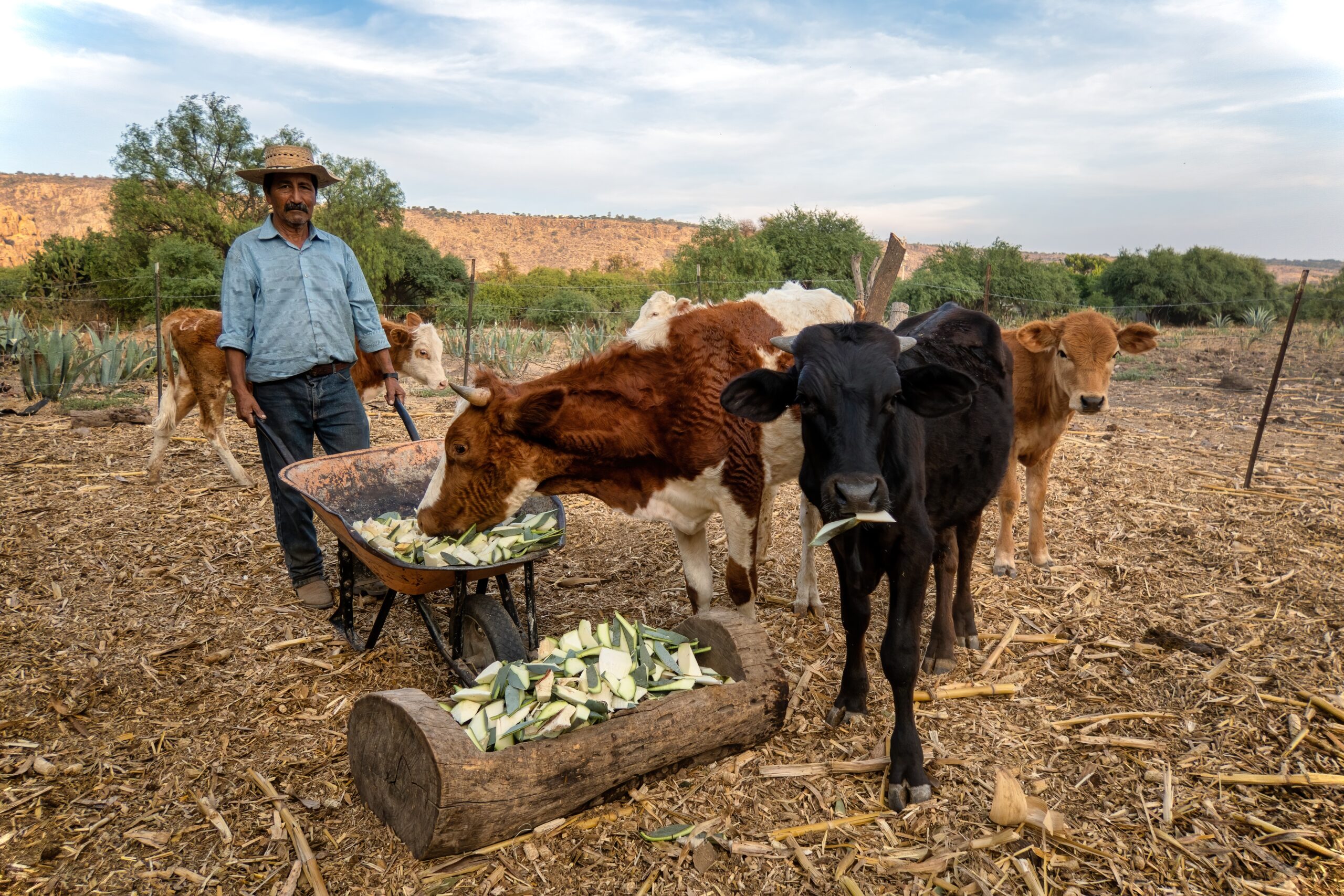“To forget how to dig the earth and to tend the soil is to forget ourselves.”
- Mahatma Gandhi
Grasslands once stretched endlessly across the planet, thriving under the watchful care of nature and indigenous stewards. For centuries, these ecosystems balanced biodiversity, soil health, and sustainable grazing. But today, much of that balance has been lost overgrazing, deforestation, and industrial agriculture have left vast lands barren, stripping them of their ability to store carbon and sustain life.
What if we could restore what was lost? Through regenerative cattle farming, agroforestry, and soil revitalization, we have the tools to bring these landscapes back to life. The question is: will we let these roots disappear forever, or will we nurture them back into a thriving future?
Grasslands cover about 40% of the Earth’s terrestrial surface and are vital ecosystems for biodiversity, food security, and carbon sequestration. However, due to human activities such as overgrazing, deforestation, and intensive agriculture, their role in climate mitigation is diminishing. Once a natural carbon sink, grasslands are increasingly turning into net carbon emitters due to poor land management which causes causes 4.4 billion tons of CO₂ emissions annually from degraded grassland. To counteract this, innovative strategies such as regenerative agriculture, socially responsible investing, regenerative cattle farming, and sustainable land management are essential. These approaches not only restore the ecological balance of grasslands but also enhance their productivity and resilience to climate change.
The Importance of Grasslands in Climate Mitigation
Grasslands store nearly one-third of the world’s carbon in their soils, highlighting their vital role in climate regulation. Despite their potential, unsustainable practices such as excessive grazing, land conversion for agriculture, and the use of chemical fertilizers are leading to carbon loss, decreased biodiversity, and soil degradation. To reverse these trends, adopting sustainable and regenerative strategies is imperative.
- Sequester atmospheric CO₂: Healthy grasslands absorb and store carbon in their roots and soil, acting as a natural carbon sink.
- Support biodiversity: They provide habitat for numerous plant and animal species, maintaining ecological balance.
- Improve soil health: Grasslands prevent soil erosion, enhance water retention, and boost fertility.
However, unsustainable practices such as excessive grazing, land conversion for agriculture, and the use of chemical fertilizers are leading to carbon loss, decreased biodiversity, and soil degradation. To reverse these trends, adopting sustainable and regenerative strategies is imperative.
Key Strategies for Climate Mitigation in Grasslands
1. Adaptive Multi-Paddock Grazing
Adaptive Multi-Paddock (AMP) grazing is a regenerative cattle farming method that mimics the natural grazing patterns of wild herbivores. Instead of continuous grazing, livestock is rotated through different paddocks, allowing vegetation to recover and soil to regenerate.
Benefits of AMP Grazing:
- Enhanced soil health: Rotational grazing improves organic matter in the soil, increasing its carbon sequestration capacity.
- Biodiversity restoration: By allowing grass to recover, native plant species can thrive, fostering a balanced ecosystem.
- Improved water retention: Healthier soil retains more moisture, reducing the risk of drought and erosion.
Studies indicate that AMP grazing can increase soil carbon storage by up to 30% compared to conventional grazing. This practice aligns with sustainable land management goals by promoting ecosystem resilience.
2. Agrivoltaics: Merging Solar Energy with Agriculture
Agrivoltaics is an innovative approach that integrates solar energy production with agricultural practices, creating a dual-use system for land. By installing solar panels above grazing pastures, this method enhances renewable energy generation while maintaining sustainable food production. Agrivoltaic systems increase land efficiency by 60%, combining food and energy production.
Key Advantages:
- Increased land efficiency: Combines energy and food production without compromising either sector.
- Microclimate regulation: Solar panels provide shade, reducing temperature extremes and water evaporation.
- Improved grass growth: Studies show that partial shading from solar panels can enhance plant growth by reducing heat stress.
Agrivoltaics represents a viable solution for both climate mitigation and energy security, making it an attractive investment opportunity for socially responsible investing.
3. Agroforestry with Reverse Phenology Trees
Agroforestry, the practice of integrating trees into agricultural landscapes, is a powerful tool for climate mitigation. A particularly promising approach is the use of reverse phenology trees, such as Faidherbia albida. These trees shed their leaves in the wet season and grow them during the dry season, benefiting crops by improving soil fertility and reducing water stress.
Benefits of Reverse Phenology Agroforestry:
- Enhanced carbon sequestration: Trees absorb CO₂ from the atmosphere, locking it in biomass and soil.
- Improved soil fertility: Leaf litter decomposition releases nutrients, reducing the need for synthetic fertilizers.
- Water conservation: The shading effect minimizes evaporation, conserving water resources.
This strategy enhances regenerative agriculture by creating self-sustaining ecosystems that require fewer external inputs.
4. Enhanced Weathering for Carbon Capture
Enhanced weathering involves the application of silicate-rich minerals to soils to accelerate the natural chemical process that removes CO₂ from the atmosphere. By spreading crushed basalt or olivine on grasslands, CO₂ is captured and converted into stable carbonate minerals, effectively reducing greenhouse gases.
How It Works:
- Minerals react with atmospheric CO₂ and moisture.
- Chemical weathering processes bind CO₂ in stable carbonate compounds.
- Carbon is stored in the soil, preventing its release into the atmosphere.
Potential Impact:
- Scalability: This method can be applied across vast grasslands without disrupting ecosystems.
- Longevity: Unlike some carbon offset strategies, enhanced weathering provides long-term carbon storage.
- Soil enrichment: Minerals improve soil structure and nutrient availability.
Enhanced weathering is an emerging area for socially responsible investing, as it presents a scientifically backed, scalable solution for climate mitigation.
Scaling these regenerative solutions requires collaboration. Forward-thinking investors have a unique opportunity to support initiatives that restore ecosystems while yielding strong returns.
Holistic Management in South America
In South America, overgrazing has led to desertification and loss of productive grasslands. Holistic management approaches have been adopted to reverse this trend.
Key Strategies:
Planned Grazing: Mimicking natural herd movements by rotating livestock to prevent overgrazing and promote plant regrowth.
Biodiversity Enhancement: Encouraging a diverse plant community to improve ecosystem resilience and carbon sequestration.
Soil Health Improvement: Applying organic amendments and reducing soil disturbance to enhance soil structure and fertility.
Impact: These practices have resulted in increased soil organic matter, improved water retention, and higher forage productivity, contributing to both climate mitigation and agricultural sustainability.
Challenges: Adapting holistic management principles to local conditions and convincing traditional ranchers to change established practices require ongoing education and demonstration of benefits.
Projects like these prove that with the right approach, regenerative agriculture is both profitable and sustainable. Investing in climate-positive agriculture today ensures a more resilient future for generations to come.
Challenges in Implementing Climate Mitigation Strategies
While these strategies offer significant benefits, their implementation faces several challenges, including:
- Financial constraints: Many sustainable practices require initial investments that may be unaffordable for small-scale farmers.
- Policy and regulatory barriers: Governments must support climate-friendly policies to incentivize adoption.
- Limited awareness: Many landowners are unaware of the long-term benefits of regenerative practices.
- Technological gaps: Some methods, such as enhanced weathering, require further research and development.
Addressing these challenges will require collaborative efforts among policymakers, investors, researchers, and farmers.
The Role of Socially Responsible Investing in Grassland Restoration
Investors play a crucial role in driving sustainable land management by funding projects that prioritize environmental and social impact. Socially responsible investing (SRI) focuses on allocating capital to initiatives that align with sustainability goals, such as regenerative agriculture and carbon capture technologies.
Investment Opportunities in Grassland Climate Mitigation:
- Carbon credits: Companies can invest in projects that enhance soil carbon sequestration and trade carbon credits.
- Renewable energy: Agrivoltaics and bioenergy projects provide financial returns while promoting sustainability.
- Sustainable food systems: Supporting regenerative cattle farming ensures long-term economic and environmental benefits.
STTG and the Future of Regenerative Grazing
As the demand for sustainable agricultural solutions grows, regenerative grazing is emerging as a critical practice for the future of farming. By prioritizing soil health, reducing input costs, and enhancing ecosystem balance, regenerative grazing presents a viable alternative to conventional livestock farming.
At STTG.ch, our commitment to regenerative grazing extends beyond our own operations. We actively promote education and collaboration, encouraging other farmers to adopt regenerative practices. By demonstrating the benefits of regenerative grazing through real-world application, we aim to inspire a broader shift toward sustainable agriculture.
A Sustainable Path Forward
By integrating regenerative cattle farming, agrivoltaics, agroforestry, and enhanced weathering, grasslands can transition from a source of emissions to a powerful carbon sink, and it can can sequester up to 2.5 metric tons of CO₂ per hectare per year. These strategies align with principles of sustainable land management and regenerative agriculture, offering multiple benefits such as:
- Improved climate resilience
- Enhanced food security
- Increased biodiversity
- Economic stability for rural communities
To ensure a sustainable future, policymakers, businesses, and individuals must support climate mitigation efforts in grasslands. By investing in regenerative practices and advocating for responsible land management, we can restore these ecosystems and maximize their potential in fighting climate change.
Companies and investors who align with nature-based solutions are shaping the future of agriculture. By supporting regenerative cattle farming and agroforestry, we can drive economic gains while reversing environmental damage.
Grasslands hold immense potential in mitigating climate change, but their effectiveness depends on sustainable management practices. By implementing adaptive multi-paddock grazing, agrivoltaics, agroforestry with reverse phenology trees, and enhanced weathering, we can restore their ecological function. These approaches, supported by socially responsible investing, can drive long-term environmental and economic benefits, making grasslands a key player in the fight against climate change.





